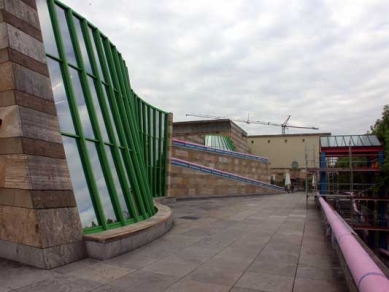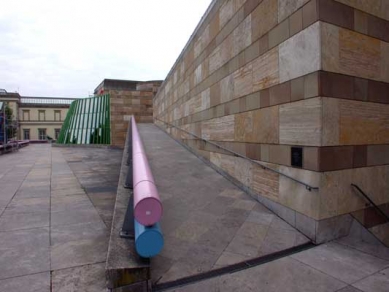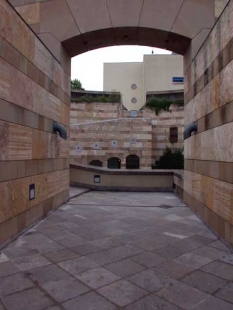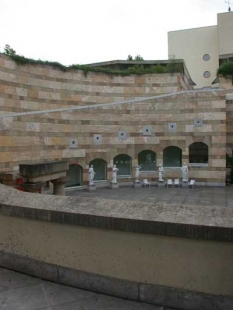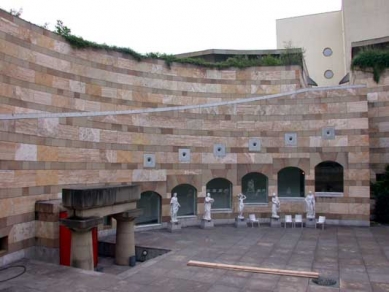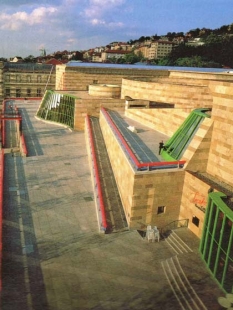
New National Gallery

One of the fundamental works of postmodernism. A content-rich structure that reacts to the urban concept of the surroundings. In his design, Stirling drew inspiration from Schinkel's Altes Museum in Berlin.
The central element of the building is an open rotunda, within which a spiral public circulation connects two parts of the city. The gallery is situated on sloping terrain, making the use of various connecting ramps a natural choice (an apparent inspiration from the Athenian Acropolis).
Temporary exhibitions take place in large open halls, while permanent collections are located in rooms, evoking the arrangement of gallery spaces in the 19th century. The entrance to these spaces resembles the entrance to an Egyptian tomb.
The entrance part of the gallery catches attention with its undulating glazing (in the 1960s, Stirling became famous for utilizing cheap industrial glazing in his modern buildings). With the subtle color of the stone cladding, the brightly painted metal parts contrast here - in fact, a variety of oppositions can be found throughout the building.
The central element of the building is an open rotunda, within which a spiral public circulation connects two parts of the city. The gallery is situated on sloping terrain, making the use of various connecting ramps a natural choice (an apparent inspiration from the Athenian Acropolis).
Temporary exhibitions take place in large open halls, while permanent collections are located in rooms, evoking the arrangement of gallery spaces in the 19th century. The entrance to these spaces resembles the entrance to an Egyptian tomb.
The entrance part of the gallery catches attention with its undulating glazing (in the 1960s, Stirling became famous for utilizing cheap industrial glazing in his modern buildings). With the subtle color of the stone cladding, the brightly painted metal parts contrast here - in fact, a variety of oppositions can be found throughout the building.
The English translation is powered by AI tool. Switch to Czech to view the original text source.
1 comment
add comment
Subject
Author
Date
Nej!
Vích
16.03.20 07:40
show all comments



